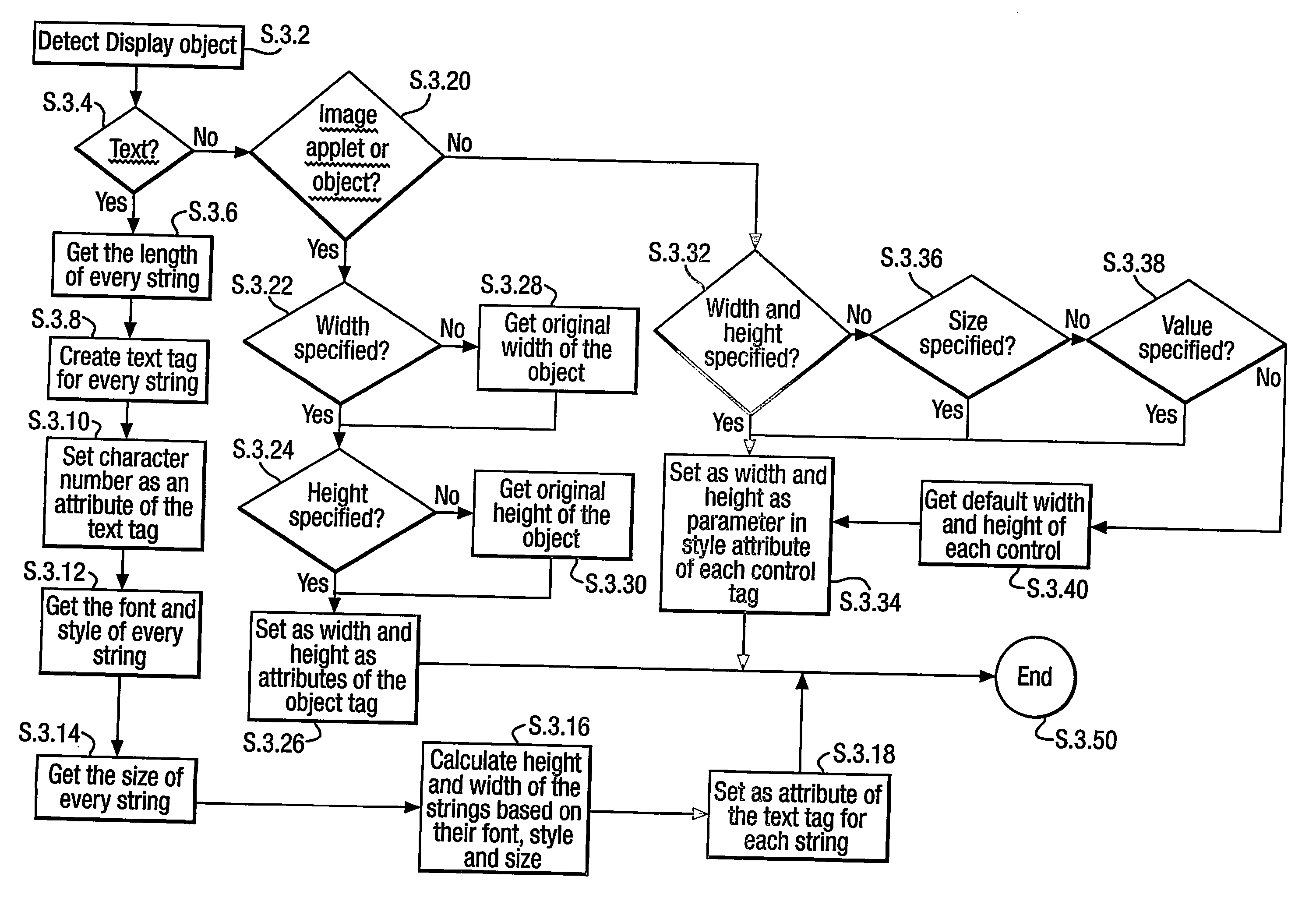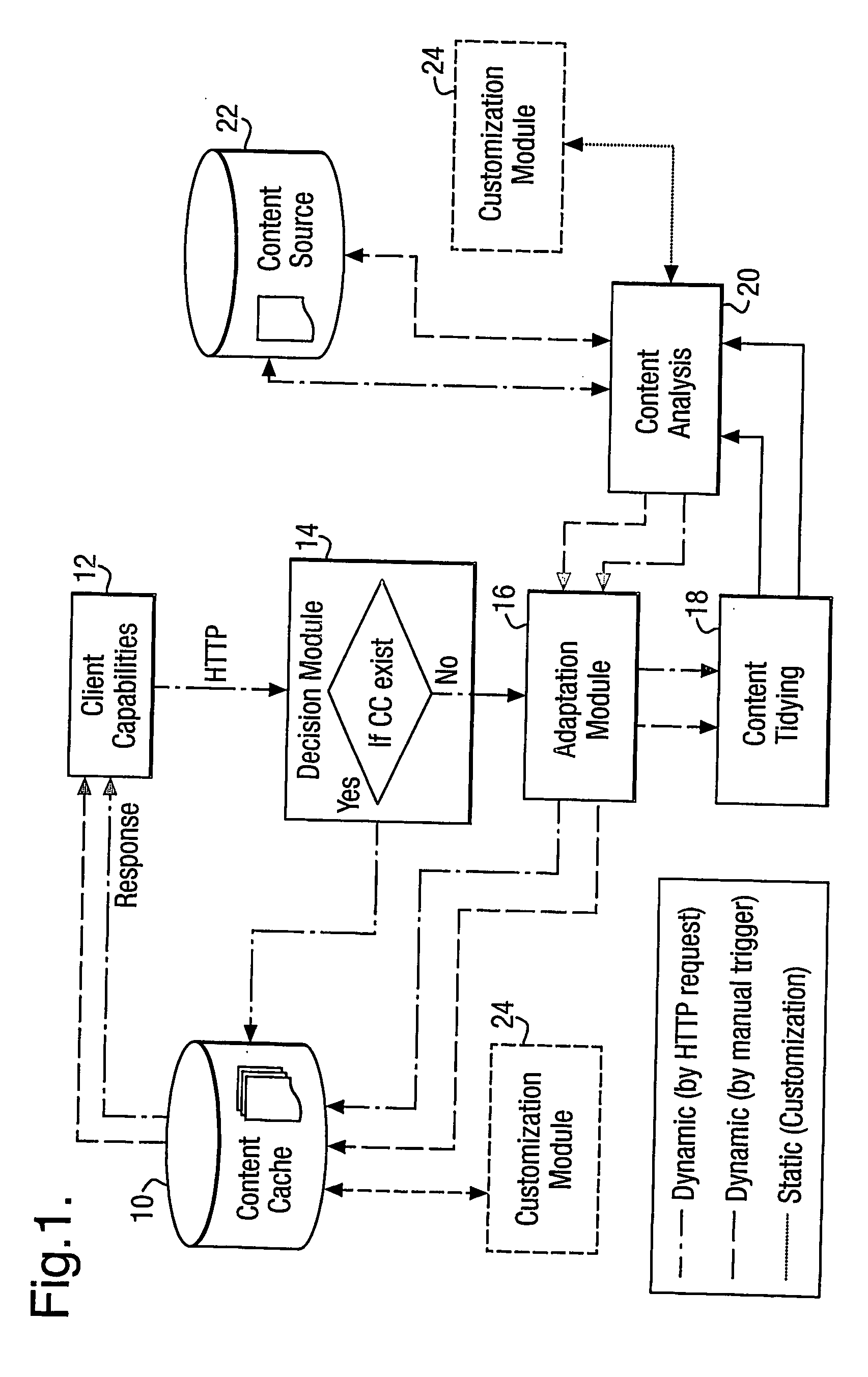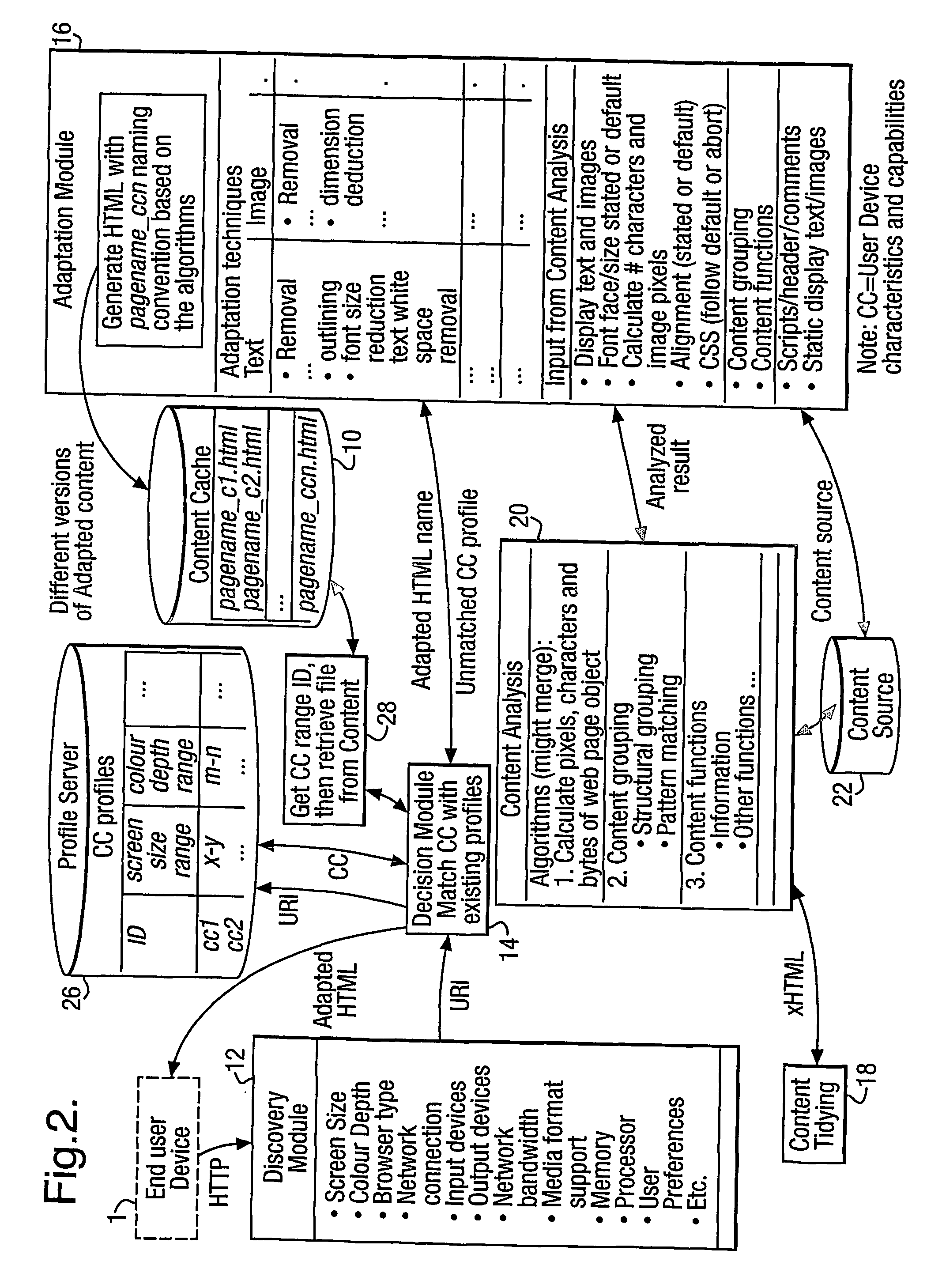Web content adaption process and system
a web content and process technology, applied in the field of process and system, can solve the problems of slow response time of the system, legal and copyright issues, and time-consuming and tedious tasks of web developers/authors
- Summary
- Abstract
- Description
- Claims
- Application Information
AI Technical Summary
Benefits of technology
Problems solved by technology
Method used
Image
Examples
Embodiment Construction
[0038] An embodiment of the present invention will now be described with reference to FIGS. 1 to 5.
[0039]FIG. 1 is a system block diagram of the system provided by the embodiment of the invention. This system consists of 8 sub-components, as described next. The full operation of the system will be described later.
[0040] Firstly there is provided the client capability discovery module 12. The purpose of this module is to discover the end user's device characteristics e.g. type of devices and their capabilities such as screen size / resolution supported, processing power etc., and as such this module receives information from the end user display device relating to its capabilities. The client capability discovery module 12 passes the end user's device information to the Decision Module 14.
[0041] The Decision module 14 contains existing Client Capabilities profile Ids which were previously detected or predefined by the adaptation system. Client Capabilities profile Ids are sets of in...
PUM
 Login to View More
Login to View More Abstract
Description
Claims
Application Information
 Login to View More
Login to View More - R&D
- Intellectual Property
- Life Sciences
- Materials
- Tech Scout
- Unparalleled Data Quality
- Higher Quality Content
- 60% Fewer Hallucinations
Browse by: Latest US Patents, China's latest patents, Technical Efficacy Thesaurus, Application Domain, Technology Topic, Popular Technical Reports.
© 2025 PatSnap. All rights reserved.Legal|Privacy policy|Modern Slavery Act Transparency Statement|Sitemap|About US| Contact US: help@patsnap.com



